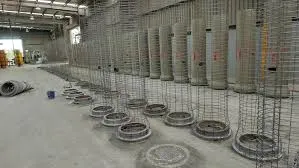- Afrikaans
- Albanian
- Amharic
- Arabic
- Armenian
- Azerbaijani
- Basque
- Belarusian
- Bengali
- Bosnian
- Bulgarian
- Catalan
- Cebuano
- China
- China (Taiwan)
- Corsican
- Croatian
- Czech
- Danish
- Dutch
- English
- Esperanto
- Estonian
- Finnish
- French
- Frisian
- Galician
- Georgian
- German
- Greek
- Gujarati
- Haitian Creole
- hausa
- hawaiian
- Hebrew
- Hindi
- Miao
- Hungarian
- Icelandic
- igbo
- Indonesian
- irish
- Italian
- Japanese
- Javanese
- Kannada
- kazakh
- Khmer
- Rwandese
- Korean
- Kurdish
- Kyrgyz
- Lao
- Latin
- Latvian
- Lithuanian
- Luxembourgish
- Macedonian
- Malgashi
- Malay
- Malayalam
- Maltese
- Maori
- Marathi
- Mongolian
- Myanmar
- Nepali
- Norwegian
- Norwegian
- Occitan
- Pashto
- Persian
- Polish
- Portuguese
- Punjabi
- Romanian
- Russian
- Samoan
- Scottish Gaelic
- Serbian
- Sesotho
- Shona
- Sindhi
- Sinhala
- Slovak
- Slovenian
- Somali
- Spanish
- Sundanese
- Swahili
- Swedish
- Tagalog
- Tajik
- Tamil
- Tatar
- Telugu
- Thai
- Turkish
- Turkmen
- Ukrainian
- Urdu
- Uighur
- Uzbek
- Vietnamese
- Welsh
- Bantu
- Yiddish
- Yoruba
- Zulu
ធ្នូ . 19, 2024 06:17 Back to list
Exploring the Properties and Applications of Cast Alloy Materials in Industry
Understanding Cast Alloys Composition, Properties, and Applications
Cast alloys are a critical category of materials used extensively in manufacturing and engineering applications. These materials, formed through the casting process, are a mixture of metals and other elements intentionally combined to achieve desirable properties such as strength, durability, and resistance to various environmental factors. In this article, we will explore the composition, properties, and applications of cast alloys, shedding light on why they play such a pivotal role in modern industries.
Composition of Cast Alloys
Cast alloys primarily consist of a base metal, usually iron, aluminum, copper, or zinc, combined with other elements to enhance specific properties. The main types of cast alloys include
1. Ferrous Alloys These alloys are primarily made of iron and include steel and cast iron. The addition of carbon in varying amounts results in variations like ductile iron and gray iron, which possess distinct mechanical properties.
2. Non-Ferrous Alloys These include aluminum alloys, bronze, and brass, each with exceptional corrosion resistance and mechanical strength. For instance, aluminum cast alloys are often alloyed with copper, silicon, or magnesium to improve their mechanical performance.
The specific composition of a cast alloy significantly influences its mechanical properties, such as tensile strength and ductility. The precise ratios of alloying elements are carefully controlled during production to meet specific performance standards.
Properties of Cast Alloys
The properties of cast alloys vary widely, depending on their composition and the conditions under which they are cast. Some key characteristics include
- High Strength Many cast alloys exhibit excellent tensile strength, making them suitable for load-bearing applications. For example, aluminum alloys are frequently used in aerospace components due to their favorable strength-to-weight ratio.
- Corrosion Resistance Non-ferrous cast alloys, particularly aluminum and copper alloys, demonstrate remarkable resistance to rust and degradation, making them ideal for use in marine environments or chemical applications
.cast alloy material

- Ductility and Malleability The ability to deform without breaking is crucial in many applications. Ductile iron, for instance, can absorb high levels of stress and is often used in construction and automotive industries.
- Castability The ease with which a material can be cast is a vital property for manufacturing processes. Cast alloys are designed to flow easily into molds, capturing intricate shapes and details, which is essential for producing complex parts.
Applications of Cast Alloys
Cast alloys find applications across a range of industries due to their unique combination of properties. Some noteworthy applications include
- Automotive Industry Cast aluminum alloys are widely used in engine blocks, wheels, and transmission housings due to their lightweight and high-strength characteristics. Additionally, cast iron is frequently utilized for brake components due to its excellent wear resistance.
- Aerospace Engineering The aerospace sector heavily relies on cast alloys, particularly aluminum and titanium alloys, for structural components, where reducing weight while maintaining integrity is crucial.
- Marine Applications Corrosion-resistant cast alloys are essential in marine environments. Aluminum and bronze cast alloys are commonly used for boat fittings, propellers, and other parts exposed to seawater.
- Industrial Machinery Cast iron is a favorite material for machine tool bases and components due to its vibration-damping properties and wear resistance. The stability of cast iron ensures precision in machining operations.
Conclusion
In summary, cast alloys represent an essential class of materials characterized by their diverse compositions and superior mechanical properties. Their widespread use in various industries—from automotive and aerospace to marine and industrial applications—underscores their versatility and reliability. Understanding the fundamental aspects of cast alloys enables engineers and manufacturers to select the right material for their specific applications, ultimately leading to better performance and longevity of components in challenging environments. As technology advances, the development and utilization of cast alloys will no doubt continue to evolve, opening new avenues for innovative applications.
-
8mm Thin-Walled Cast Steel Manhole Cover Pallet Bottom Ring | Durable
NewsAug.04,2025
-
Premium Cast Iron Water Main Pipe: Durable, Corrosion-Resistant
NewsAug.03,2025
-
Durable Cast Iron Water Mains | AI-Optimized Systems
NewsAug.02,2025
-
High-Efficiency Propane Boiler for Baseboard Heat | Save Energy
NewsAug.01,2025
-
Premium Source Suppliers for Various Gray Iron Castings
NewsJul.31,2025
-
Durable Cast Iron Water Main Pipes | Long-Lasting
NewsJul.31,2025


